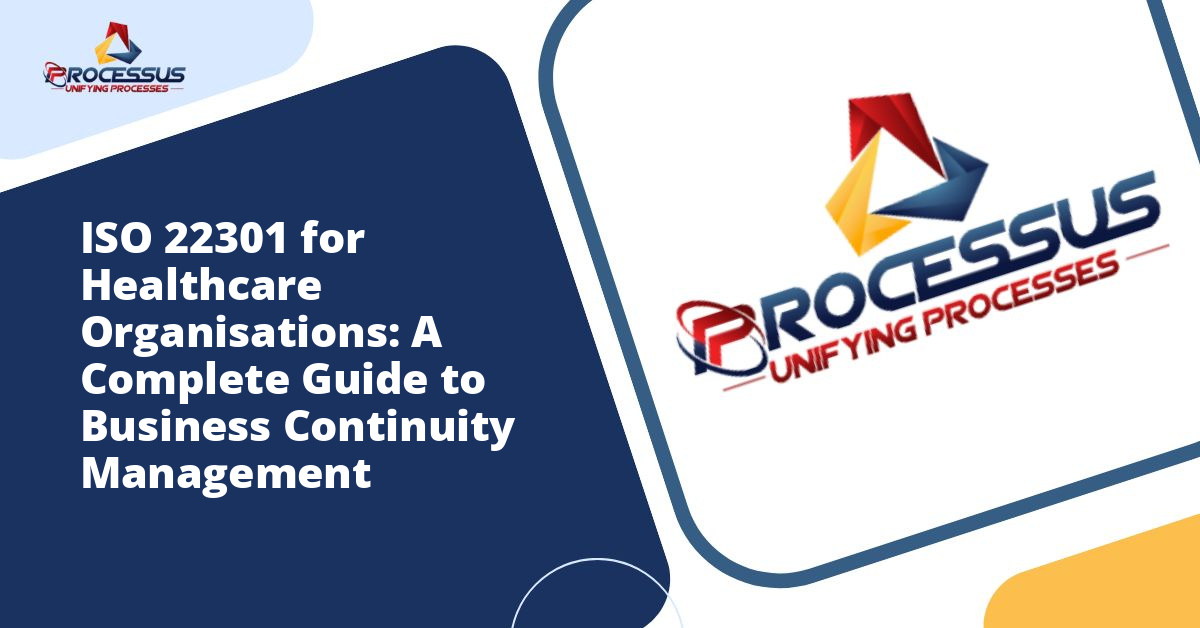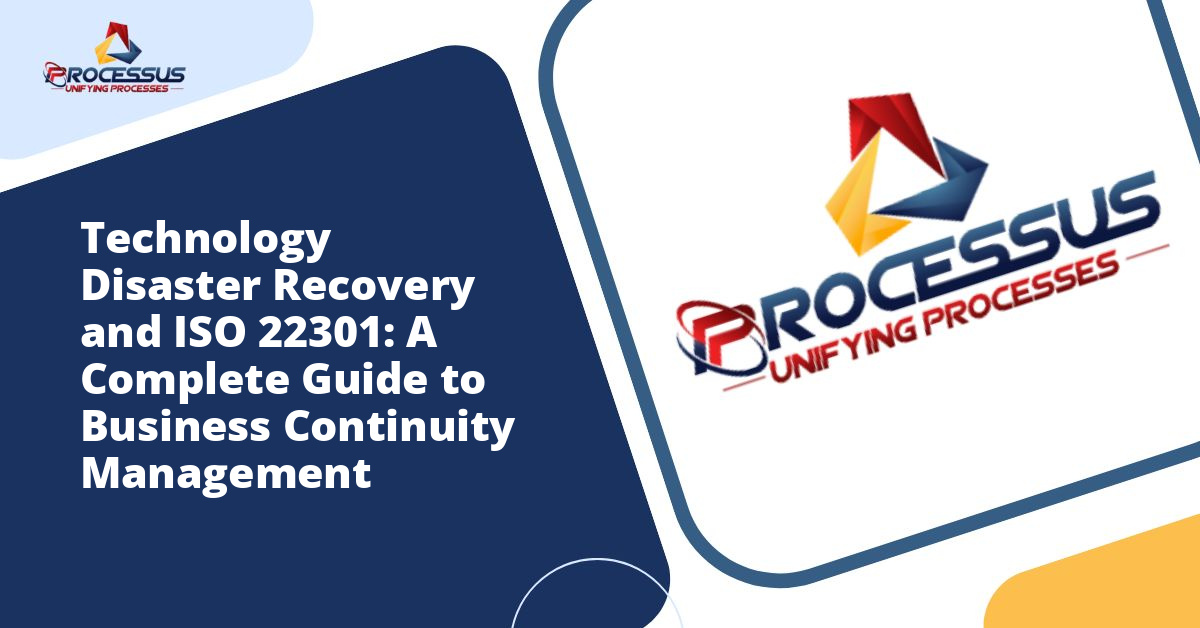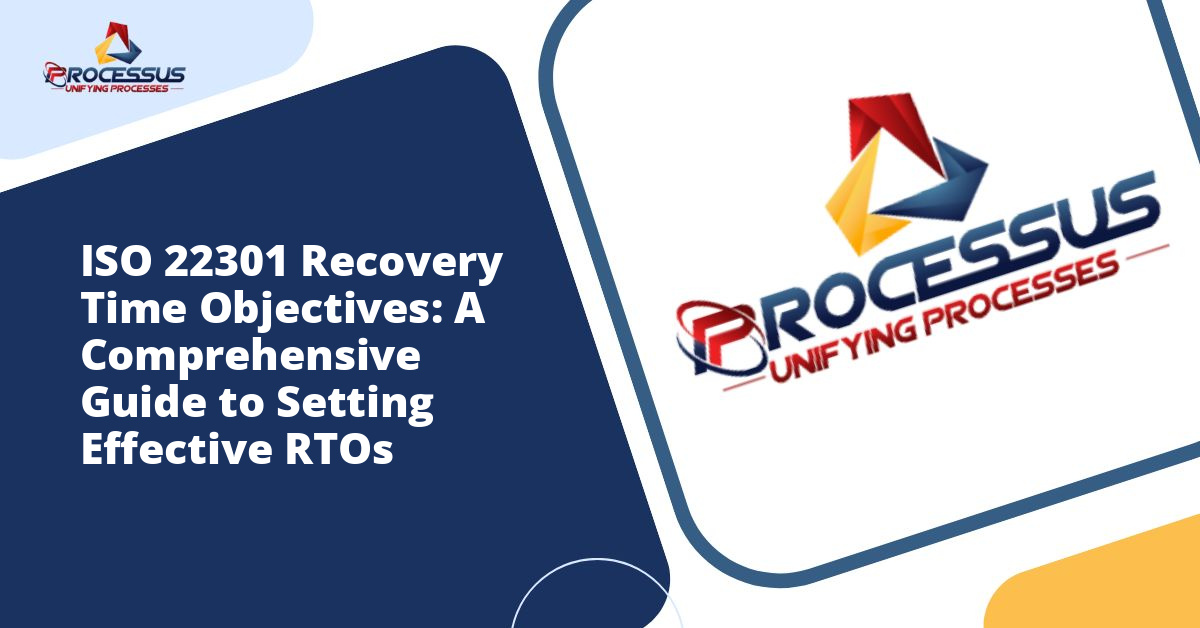The global pandemic has fundamentally changed how organizations approach business continuity and disaster preparedness. While many companies scrambled to maintain operations during COVID-19, those with robust business continuity management systems fared considerably better. ISO 22301, the international standard for business continuity management, provides a structured framework that helps organizations prepare for, respond to, and recover from disruptive incidents, including pandemics.
This comprehensive guide explores how ISO 22301 can strengthen your organization’s pandemic preparedness and ensure operational resilience during global health crises. You might also enjoy reading about ISO 22301 Business Continuity Plan Development: A Complete Guide for Organizations.
Understanding ISO 22301 and Its Relevance to Pandemic Preparedness
ISO 22301 is an internationally recognized standard that specifies requirements for planning, establishing, implementing, operating, monitoring, reviewing, maintaining, and continually improving a documented management system to prepare for, respond to, and recover from disruptive incidents when they arise. Originally published in 2012 and updated in 2019, this standard has become increasingly relevant in our interconnected and vulnerable global business environment. You might also enjoy reading about ISO 22301 for Financial Services Organisations: A Complete Guide to Business Continuity Management.
The standard takes a holistic approach to business continuity management, requiring organizations to understand their context, identify potential threats, assess their impact, and develop appropriate response strategies. Pandemics represent one of the most challenging scenarios for business continuity because they affect multiple aspects of operations simultaneously: workforce availability, supply chains, customer behavior, and regulatory environments. You might also enjoy reading about Business Impact Analysis for ISO 22301 Compliance: A Complete Implementation Guide.
Why Pandemics Require Special Attention in Business Continuity Planning
Unlike localized disasters such as fires or floods, pandemics present unique challenges that test every aspect of an organization’s resilience. They affect entire regions or the globe simultaneously, eliminating the possibility of relocating operations to unaffected areas. The prolonged duration of pandemics, often lasting months or years, requires sustained response capabilities rather than short-term emergency measures.
Furthermore, pandemics create cascading effects throughout business ecosystems. When your suppliers, customers, and partners all face disruptions simultaneously, traditional contingency plans may prove inadequate. ISO 22301 addresses these complex scenarios by promoting a comprehensive, systematic approach to continuity management.
Core Components of ISO 22301 for Pandemic Preparedness
Context of the Organization
The first step in implementing ISO 22301 involves understanding your organization’s context, including internal and external factors that affect business continuity. For pandemic preparedness, this means analyzing your industry’s vulnerability to health crises, understanding regulatory requirements for workplace safety, and identifying dependencies on human resources that cannot be easily replaced or automated.
Organizations must consider their geographical spread, workforce demographics, and the nature of their operations. Companies with aging workforces may face higher absenteeism during health crises, while those dependent on physical presence for operations face different challenges than organizations that can transition to remote work.
Leadership and Commitment
ISO 22301 places significant emphasis on leadership commitment to business continuity management. Top management must demonstrate leadership by establishing business continuity policies, ensuring resources are available, and promoting a culture of preparedness throughout the organization.
During a pandemic, leadership becomes even more critical. Executives must make rapid decisions with incomplete information, balance employee safety with business needs, and communicate transparently with stakeholders. The standard requires leaders to integrate business continuity into the organization’s core processes, ensuring that pandemic preparedness is not an afterthought but a fundamental aspect of operations.
Planning and Risk Assessment
The planning phase of ISO 22301 requires organizations to conduct comprehensive business impact analyses and risk assessments. For pandemic preparedness, this means identifying which business functions are critical, how long the organization can survive without them, and what resources are necessary to maintain them during a health crisis.
Risk assessment for pandemics should consider various scenarios, from mild outbreaks affecting small portions of the workforce to severe pandemics that disrupt global supply chains and require extended periods of modified operations. Organizations should evaluate the likelihood and potential impact of different pandemic scenarios, considering factors such as transmission rates, severity of illness, and potential duration.
Developing Pandemic-Specific Business Continuity Strategies
Workforce Protection and Management
One of the most critical aspects of pandemic preparedness under ISO 22301 involves protecting and managing your workforce. The standard requires organizations to determine resource requirements for business continuity, including human resources with appropriate competencies.
Pandemic-specific workforce strategies should include protocols for remote work arrangements, cross-training programs to ensure redundancy in critical roles, and clear policies for sick leave and quarantine procedures. Organizations should establish systems for monitoring employee health, providing necessary protective equipment, and adapting workspaces to minimize transmission risks.
Succession planning becomes particularly important during pandemics when key personnel may become unavailable suddenly. ISO 22301 encourages organizations to document critical knowledge, establish clear lines of authority, and develop contingency plans for leadership continuity.
Supply Chain Resilience
Pandemics often disrupt global supply chains, affecting the availability of raw materials, components, and finished goods. ISO 22301 requires organizations to understand their dependencies on external providers and develop strategies to manage these relationships during disruptions.
For pandemic preparedness, this means identifying critical suppliers, assessing their vulnerability to health crises, and establishing alternative sourcing options. Organizations should consider diversifying their supply base geographically, maintaining strategic stockpiles of essential materials, and developing collaborative relationships with suppliers to ensure mutual support during crises.
The standard also emphasizes the importance of contractual arrangements that address business continuity requirements. Organizations should include pandemic-related provisions in supplier agreements, specifying expectations for communication, priority access to resources, and contingency arrangements.
Technology and Infrastructure
Modern business continuity increasingly depends on technology infrastructure that enables remote work, digital collaboration, and automated processes. ISO 22301 requires organizations to determine and provide resources needed for business continuity, including technology systems.
Pandemic preparedness should include robust information technology systems that support remote access, secure data transmission, and virtual collaboration. Organizations should ensure sufficient capacity for increased remote work, implement cybersecurity measures to protect distributed networks, and provide employees with necessary hardware and software.
Cloud-based systems offer particular advantages for pandemic resilience, allowing employees to access critical applications and data from any location. However, organizations must balance flexibility with security, implementing appropriate access controls and data protection measures.
Response and Recovery Procedures
Incident Response Structure
ISO 22301 requires organizations to establish incident response procedures that can be activated quickly when disruptions occur. For pandemics, this includes defining trigger points for activating response plans, establishing a crisis management team, and creating clear communication channels.
The incident response structure should include defined roles and responsibilities, decision-making protocols, and escalation procedures. Organizations should establish a pandemic response team with representatives from various functions, including human resources, operations, communications, and legal departments.
Response procedures should be flexible enough to adapt to evolving situations. Pandemics often unfold over extended periods with changing characteristics, requiring organizations to adjust their responses as new information becomes available and circumstances change.
Communication Management
Effective communication is essential during any crisis, but particularly during pandemics when misinformation can spread rapidly and stakeholder anxiety runs high. ISO 22301 emphasizes the importance of internal and external communication during disruptions.
Organizations should establish communication protocols that ensure timely, accurate, and consistent information reaches all stakeholders. This includes regular updates to employees about safety measures and operational changes, transparent communication with customers about service levels, and coordination with regulatory authorities and public health officials.
Communication plans should address various audiences, including employees, customers, suppliers, investors, regulators, and the media. Each audience requires tailored messages delivered through appropriate channels. Organizations should designate spokespersons, prepare template communications for common scenarios, and establish systems for rapid information dissemination.
Recovery Strategies
While response focuses on immediate actions to maintain critical operations, recovery involves returning to normal business activities or establishing a new normal. ISO 22301 requires organizations to develop recovery strategies with defined objectives and timeframes.
Pandemic recovery presents unique challenges because the transition from crisis to normalcy often occurs gradually and unevenly. Organizations may need to maintain modified operations for extended periods, adapting to changing public health guidance and market conditions.
Recovery strategies should address not only operational restoration but also employee well-being, customer relationship rebuilding, and financial recovery. Organizations should plan for phased returns to physical workplaces, considering employee concerns and ongoing health risks. They should also assess what temporary changes should become permanent improvements to operations.
Testing, Exercising, and Continuous Improvement
Testing Your Pandemic Preparedness
ISO 22301 requires organizations to test their business continuity plans regularly to ensure they remain effective and relevant. Testing reveals gaps in planning, identifies areas for improvement, and builds organizational capability to respond effectively during real incidents.
For pandemic preparedness, testing should include tabletop exercises that walk through pandemic scenarios, simulations that test remote work capabilities, and full-scale exercises that activate response procedures. Organizations should test various scenarios, from localized outbreaks to global pandemics, and evaluate their ability to maintain critical operations under different conditions.
Testing should involve all relevant personnel, including leadership, operational staff, and support functions. After each exercise, organizations should conduct thorough reviews, document lessons learned, and update plans accordingly.
Performance Evaluation and Monitoring
The standard requires organizations to establish processes for monitoring, measuring, analyzing, and evaluating business continuity performance. This includes defining key performance indicators, conducting regular management reviews, and tracking the effectiveness of continuity measures.
For pandemic preparedness, relevant metrics might include the percentage of workforce capable of remote work, time required to activate response procedures, availability of critical supplies, and maintenance of service levels during disruptions. Organizations should regularly assess these metrics and compare them against established objectives.
Management reviews should occur at planned intervals, providing opportunities for leadership to evaluate the effectiveness of the business continuity management system, consider changes in the organization’s context, and allocate resources for improvement initiatives.
Continuous Improvement Through Lessons Learned
ISO 22301 embraces the principle of continuous improvement, requiring organizations to learn from incidents, exercises, and changes in their environment. The COVID-19 pandemic provided unprecedented real-world experience that organizations should incorporate into their business continuity planning.
After any incident or exercise, organizations should conduct structured reviews to identify what worked well, what could be improved, and what unexpected challenges arose. These lessons should inform updates to business continuity plans, training programs, and resource allocations.
Continuous improvement also involves staying informed about emerging threats, new technologies, and evolving best practices. Organizations should participate in industry forums, monitor public health developments, and benchmark their capabilities against similar organizations.
Implementation Challenges and Best Practices
Common Implementation Challenges
Organizations often encounter obstacles when implementing ISO 22301, particularly when addressing pandemic preparedness. Resource constraints may limit the ability to invest in necessary technology, stockpile supplies, or conduct comprehensive training. Leadership may struggle to prioritize long-term preparedness when faced with immediate operational demands.
Cultural resistance represents another significant challenge. Employees may view business continuity planning as unnecessary bureaucracy or may be reluctant to change established work patterns. Overcoming this resistance requires persistent communication about the value of preparedness and visible leadership commitment.
The complexity and uncertainty surrounding pandemics can make planning difficult. Organizations may struggle to identify appropriate scenarios to plan for or may find it challenging to develop strategies that remain effective across different pandemic characteristics.
Best Practices for Successful Implementation
Successful implementation of ISO 22301 for pandemic preparedness requires a systematic approach that addresses both technical and human elements. Organizations should start by securing visible executive sponsorship, ensuring that leadership actively supports business continuity initiatives and allocates necessary resources.
Taking an incremental approach can make implementation more manageable. Rather than attempting to address all aspects of business continuity simultaneously, organizations can prioritize the most critical functions and gradually expand their efforts. This approach allows teams to build capability progressively and demonstrate early wins that build momentum.
Engaging employees throughout the organization increases buy-in and improves the quality of planning. Frontline staff often have valuable insights into operational vulnerabilities and practical solutions. Including diverse perspectives in planning processes produces more robust and realistic continuity strategies.
Leveraging technology appropriately can enhance pandemic preparedness without excessive cost. Cloud-based collaboration tools, automated monitoring systems, and digital communication platforms enable flexible, resilient operations. However, technology should support rather than complicate business continuity efforts.
The Business Case for ISO 22301 Certification
While organizations can implement business continuity management systems without formal certification, pursuing ISO 22301 certification offers several advantages. Certification provides independent verification that your system meets international standards, enhancing credibility with customers, partners, and regulators.
Many organizations require their suppliers to demonstrate business continuity capabilities, and ISO 22301 certification provides clear evidence of preparedness. In some industries and jurisdictions, certification may satisfy regulatory requirements or provide competitive advantages in procurement processes.
The certification process itself adds value by requiring rigorous documentation, systematic implementation, and external auditing. This discipline often reveals gaps that might otherwise go unnoticed and ensures that business continuity management receives appropriate attention and resources.
From a financial perspective, investment in business continuity management under ISO 22301 can reduce losses during disruptions, lower insurance premiums, and protect organizational reputation. The cost of certification should be weighed against these benefits and the potential costs of inadequate preparedness.
Looking Forward: The Future of Pandemic Preparedness
The experience of COVID-19 has permanently changed how organizations approach pandemic preparedness. Business continuity management is no longer viewed as planning for unlikely scenarios but as an essential component of operational excellence. ISO 22301 provides a proven framework for this critical function.
Future pandemic preparedness will likely involve greater integration of business continuity with other management systems, including occupational health and safety, risk management, and quality management. Organizations will increasingly adopt holistic approaches that address multiple types of disruptions through unified frameworks.
Technology will continue to play an expanding role in business continuity, with artificial intelligence and data analytics enabling better prediction of disruptions, faster response, and more effective resource allocation. However, technology must complement rather than replace fundamental preparedness principles of understanding risks, planning responses, and building organizational resilience.
The importance of collaboration and information sharing will grow as organizations recognize that pandemic preparedness depends on ecosystem resilience. Industry consortiums, public-private partnerships, and international cooperation will become increasingly important for managing global health threats effectively.
Conclusion
Pandemic preparedness represents one of the most complex challenges in business continuity management, requiring organizations to plan for widespread, prolonged disruptions that affect every aspect of operations. ISO 22301 provides a comprehensive framework for addressing these challenges systematically and effectively.
By implementing the standard’s requirements for context analysis, leadership commitment, planning, risk assessment, response procedures, and continuous improvement, organizations can significantly enhance their resilience to pandemics and other major disruptions. The investment in business continuity management pays dividends not only during crises but also through improved operational efficiency, enhanced stakeholder confidence, and stronger organizational culture.
The question is no longer whether organizations should prepare for pandemics but how well prepared they will be when the next health crisis emerges. ISO 22301 offers a roadmap for building that preparedness, turning potential vulnerabilities into sources of competitive advantage and ensuring that organizations can continue serving their stakeholders regardless of the challenges they face.
Organizations that embrace ISO 22301 and integrate its principles into their daily operations will be better positioned not only to survive future pandemics but to thrive in an increasingly uncertain and complex business environment. The time to prepare is now, before the next crisis tests our resilience once again.







